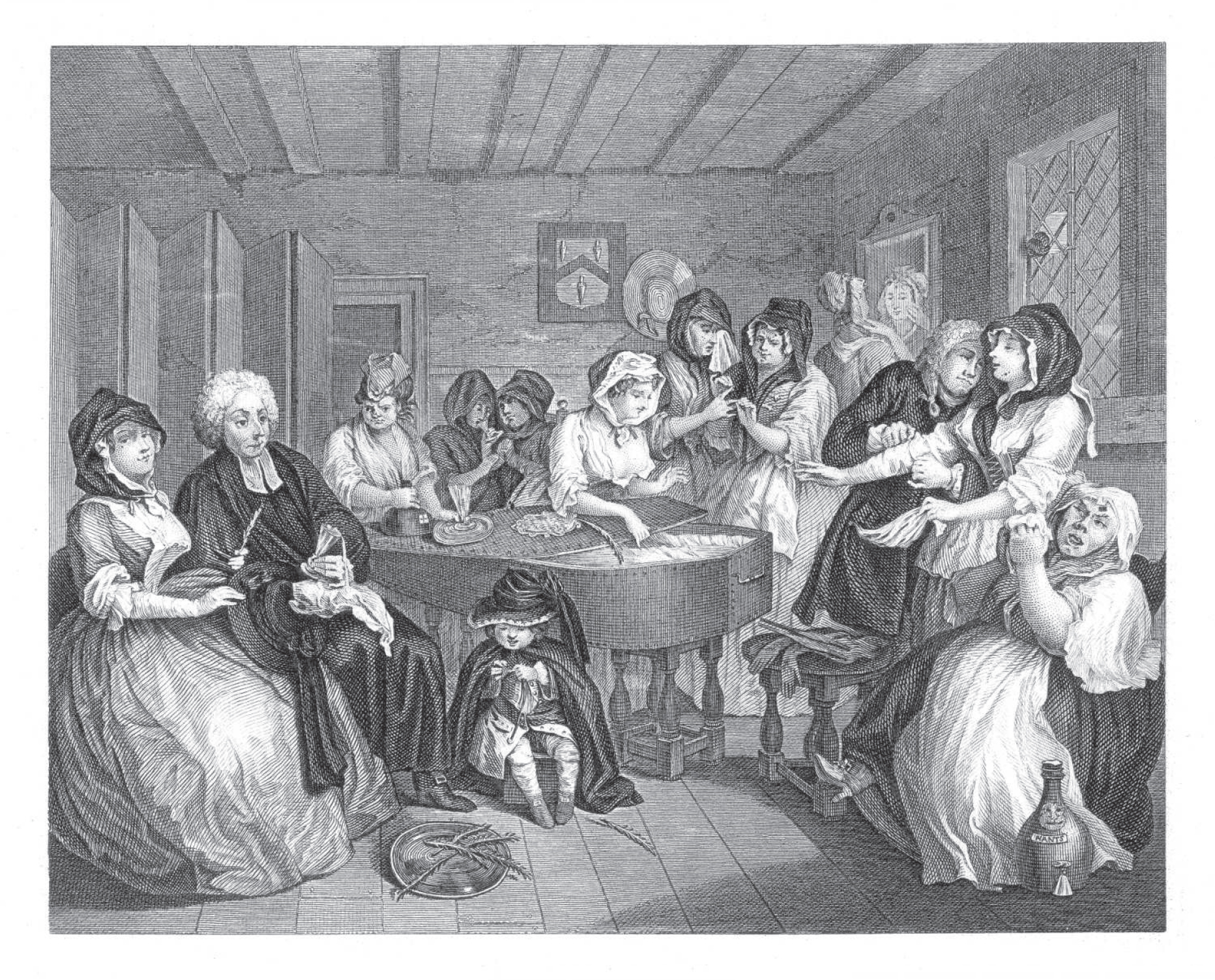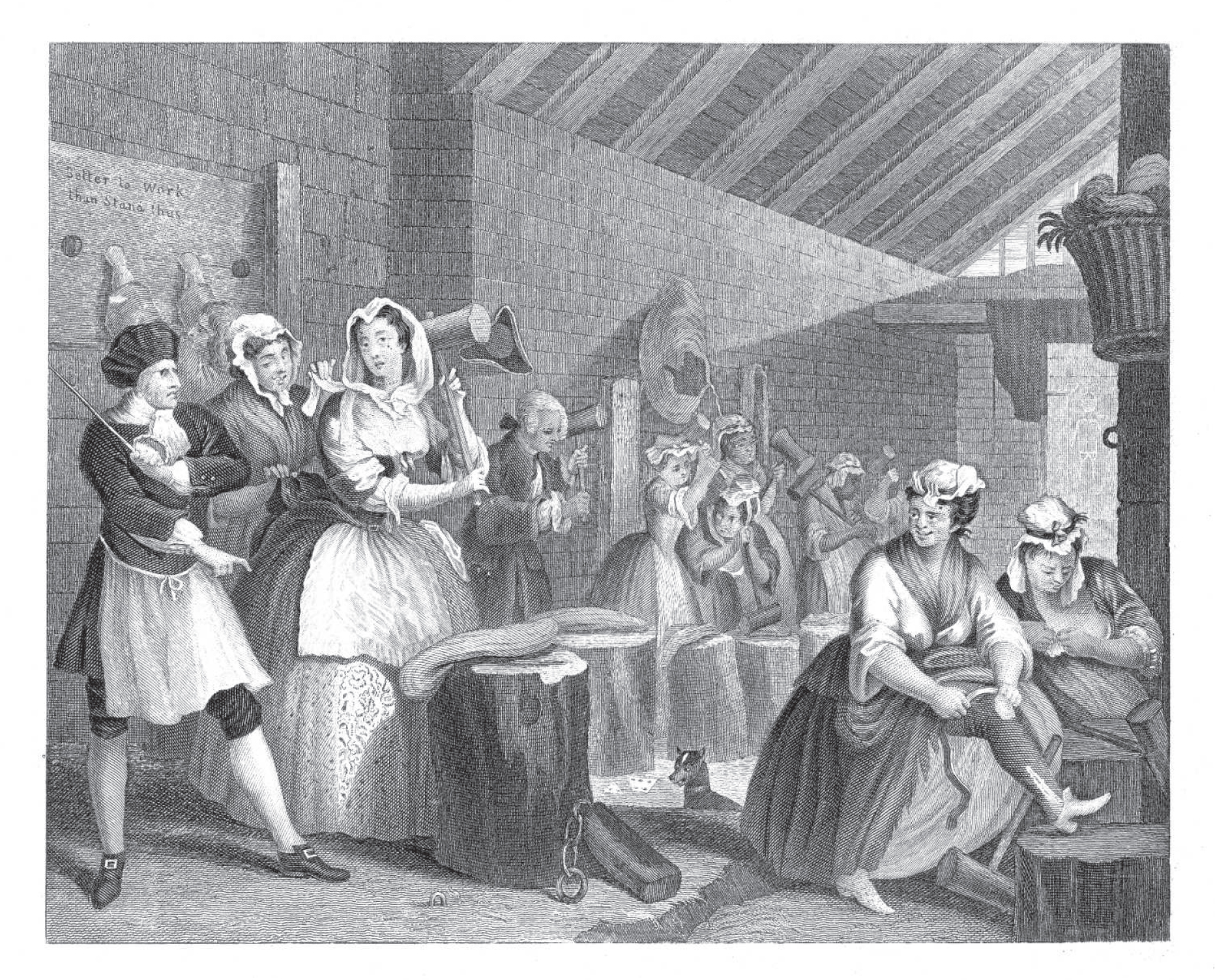

This work is heavily indebted to the exemplary scholarship of two landmark publications of 2016, Elizabeth Einberg's authoritative catalogue of Hogarth's paintings (all post-1726) and Peter Black's ground-breaking exploration of Hogarth and house decoration. Archive-based evidence first presented here confirms their dating not to the 1660s but the 1720s and supports Hogarth's presence at Littlecote House around 1724. Local historians attribute the Littlecote murals to unidentified amateur Dutch painters, working in the 1660s (when Hudibras was first published).

Butler's book-length poem is exceptionally significant: book-historically for its key role in copyright legislation and eighteenth-century British book illustration art-historically for its central role in the early career of Hogarth, who published two sets of engravings illustrating Hudibras in 1726.

Within a complex decorative scheme broadly referencing themes of human folly and the cabinet of curiosities, two walls feature floor to ceiling composite murals uniting numerous episodes from the publications most significant for Hogarth's early career as a book illustrator: Cervantes' Don Quixote and its most successful English derivation, Samuel Butler's Hudibras. Unknown to Hogarth specialists and dismissed by art historians, they are in the painted room at Littlecote House. Astoundingly, no previous research-based study of them exists.
Harlots progress pdf#
End Note.įULL PDF AVAILABLE AT: This article progresses long-term researches on Hogarth and book history, the iconography of the skimmington and transnational receptions of Don Quixote, by introducing a substantial new group of images potentially illuminating Hogarth's lost activities as a young painter, before he turned 30 in 1727. The Graphic Novels 3.0 Graphic Novels 3.1 Criticism of the Neologism 4. In The Modern Sense 2.0 Sequential Art, the Term 2.1 Modern Comics, an Introduction 2.1.1 Manga 2.1.2 Franco-Belgian Comics 2.1.3 American Comics 3. The Inception 1.0 The Need To Tell Stories 1.1 In Early History 1.2 Medieval Make-believe 2. Following is the sequenced outline of this colloquium, yet the subsections can be read on their own, irrespective of the order coherence being subject to the familiarity of the readers with the media of sequential art. The paper also towards the end opines on the current surge of graphic novels in the popular yet not so mainstream readership, India being the context. It also briefly discusses my understanding of the art form and its parallel evolution over time, in dispersed locations on the face of Earth, sometimes citing a few examples to illustrate the point, and at other times quoting the exemplars of the field to suggest the influence they had on ideas and perceptions of the followers, here mostly being the comic book readers and artists. Beyond differences in poetic strategy, moreover, the novels paradigmatically reveal distinct ideologies: their politics of memory variously promote an encompassing transcultural sense of responsibility, an aestheticist ‘creative amnesia’, and the need to preserve a collective ‘black’ identity.This colloquium paper is an attempt to reflect my thoughts on stories, and telling thereof using visual sequential art as the media. Toni Morrison’s Beloved, finally, is steeped in black music, from spirituals and blues to the art of John Coltrane. David Dabydeen’s A Harlot’s Progress approaches slavery through the gateway of paintings by William Hogarth, Sir Joshua Reynolds and J.M.W. Novelists may choose to write back to texts, images or music: Caryl Phillips’s Cambridge brings together numerous fragments of slave narratives, travelogues and histories to shape a brilliant montage of long-forgotten texts. Each reading illustrates a particular poetic strategy of accessing the past and presents a distinct political outlook on memory. William Hogarth, played by Toby Jones ('Harry Potter', 'Captain America'), recalls the life and death of an alluring and mysterious woman he once knew. It sets out to chart systematically the ways in which literature and memory intersect, and offers readings of three seminal Black Atlantic novels. A Harlots Progress Follow the life of a beautiful, troubled prostitute in this drama. This book is concerned with how literature performs as memory. Recently, however, fiction writers have ventured to ‘re-member’ the Black Atlantic. There is a prevailing desire to forget: While victims of the African diaspora tried to flee the sites of trauma, enlightened Westerners preferred to be oblivious to the discomforting complicity between their enlightenment and chattel slavery. The Atlantic slave trade continues to haunt the cultural memories of Africa, Europe and the Americas.


 0 kommentar(er)
0 kommentar(er)
